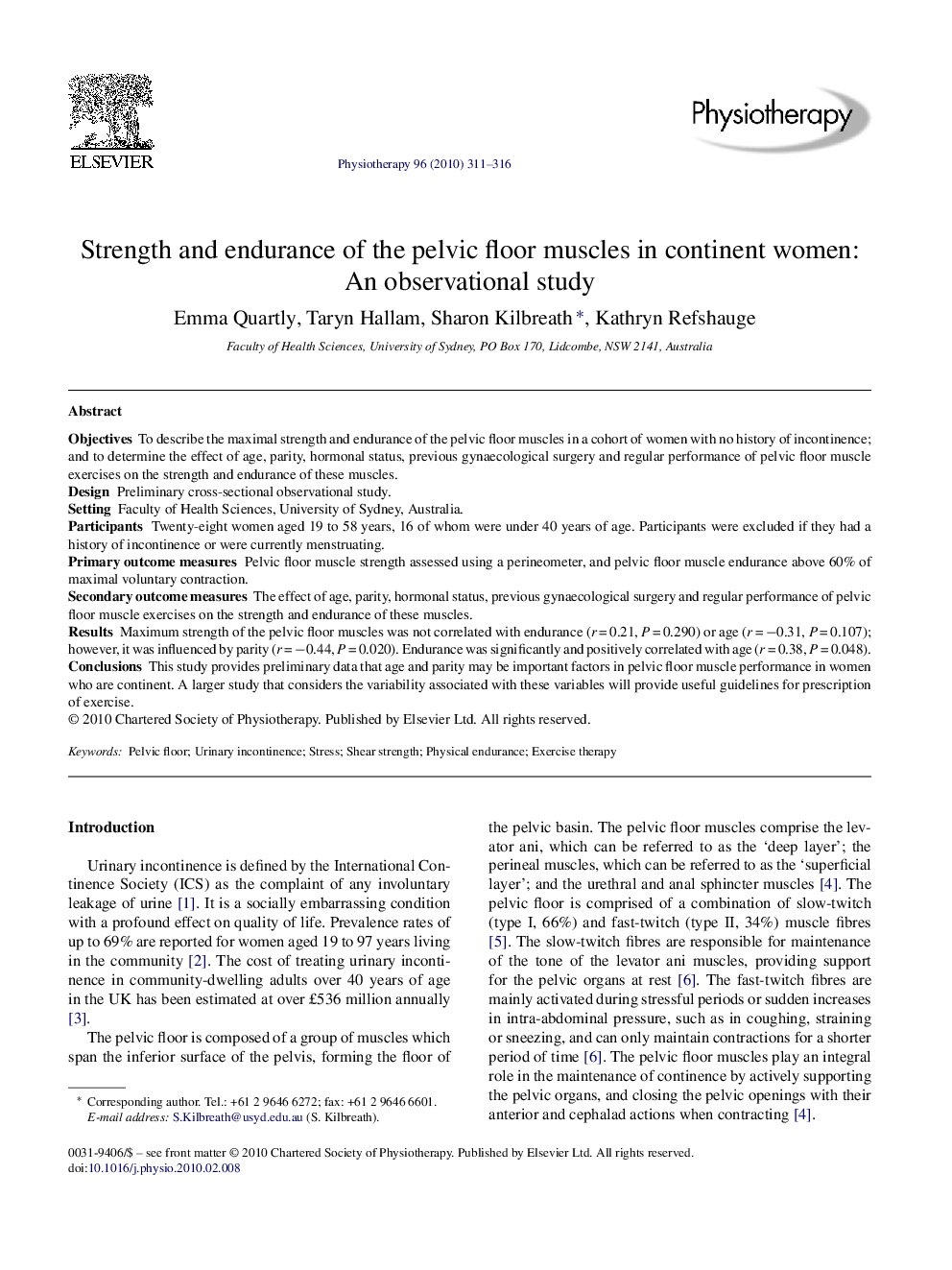| Article ID | Journal | Published Year | Pages | File Type |
|---|---|---|---|---|
| 2627387 | Physiotherapy | 2010 | 6 Pages |
ObjectivesTo describe the maximal strength and endurance of the pelvic floor muscles in a cohort of women with no history of incontinence; and to determine the effect of age, parity, hormonal status, previous gynaecological surgery and regular performance of pelvic floor muscle exercises on the strength and endurance of these muscles.DesignPreliminary cross-sectional observational study.SettingFaculty of Health Sciences, University of Sydney, Australia.ParticipantsTwenty-eight women aged 19 to 58 years, 16 of whom were under 40 years of age. Participants were excluded if they had a history of incontinence or were currently menstruating.Primary outcome measuresPelvic floor muscle strength assessed using a perineometer, and pelvic floor muscle endurance above 60% of maximal voluntary contraction.Secondary outcome measuresThe effect of age, parity, hormonal status, previous gynaecological surgery and regular performance of pelvic floor muscle exercises on the strength and endurance of these muscles.ResultsMaximum strength of the pelvic floor muscles was not correlated with endurance (r = 0.21, P = 0.290) or age (r = −0.31, P = 0.107); however, it was influenced by parity (r = −0.44, P = 0.020). Endurance was significantly and positively correlated with age (r = 0.38, P = 0.048).ConclusionsThis study provides preliminary data that age and parity may be important factors in pelvic floor muscle performance in women who are continent. A larger study that considers the variability associated with these variables will provide useful guidelines for prescription of exercise.
